Hibiscus remains a popular crop among flower growers. Ornamental plants from the Malvaceae family are grown as indoor and garden flowers, used to decorate summer cottages, city parks, greenhouses.
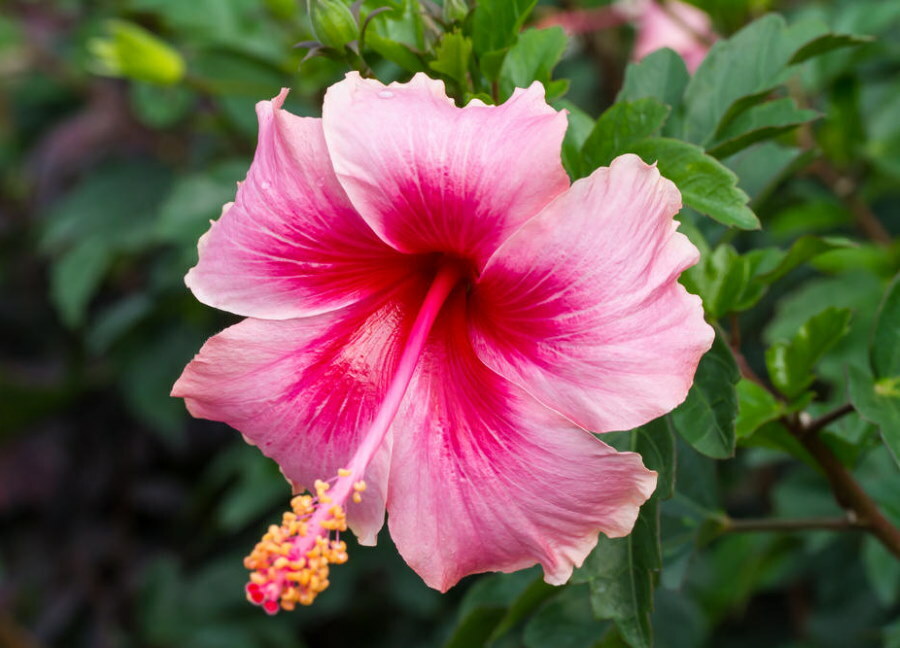
Abundant and long-lasting flowering is the main advantage of garden hibiscus
How beautiful the hibiscus shrub is, the photo conveys perfectly. Although the amazing flowers retain their freshness for only one day, due to the abundant flowering, the bushes delight with beauty from a month to three, depending on the variety.
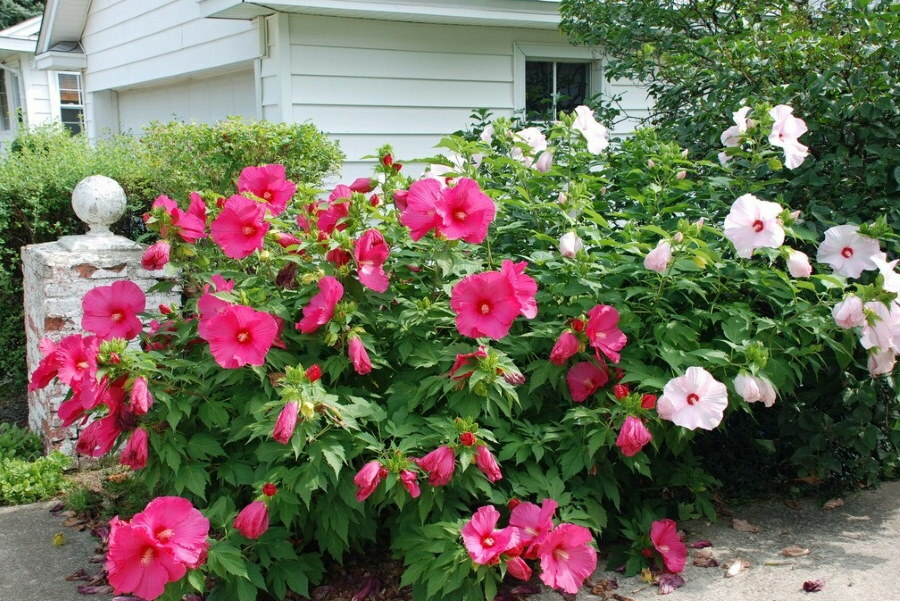
Hibiscus can grow as a small tree or herbaceous shrub
Crop care is simple, the plants are grown as perennials and annuals. Among the species diversity, there are herbaceous and tree-like varieties, deciduous and evergreen varieties. In each climatic zone, certain species are bred. In the wild (Malaysia, Indochina), the plant grows up to 8 meters tall, the color of the petals is predominantly red. Such hibiscus is valued for the taste and healing properties of the petals.
Hibiscus - species and varieties
Content
- Hibiscus - species and varieties
- Syrian hibiscus (garden) (Hibiscus syriacus)
- Hybrid hibiscus (Hibiscus hybridus)
- Marsh hibiscus (Hibiscus moscheutos)
- Chinese rose hibiscus (Hibiscus rosa-sinensis)
- Hibiscus triple (Hibiscus trionum)
- Rules for caring for garden hibiscus
- Application in landscape design - photo examples
- Video: Herbaceous hibiscus outdoors
- Photo of garden hibiscus
Breeders diversified the color scheme, brought out white, pink, yellow and blue hybrids of various shades. More than 500 species are known, more than half were bred for decorative landscape design.
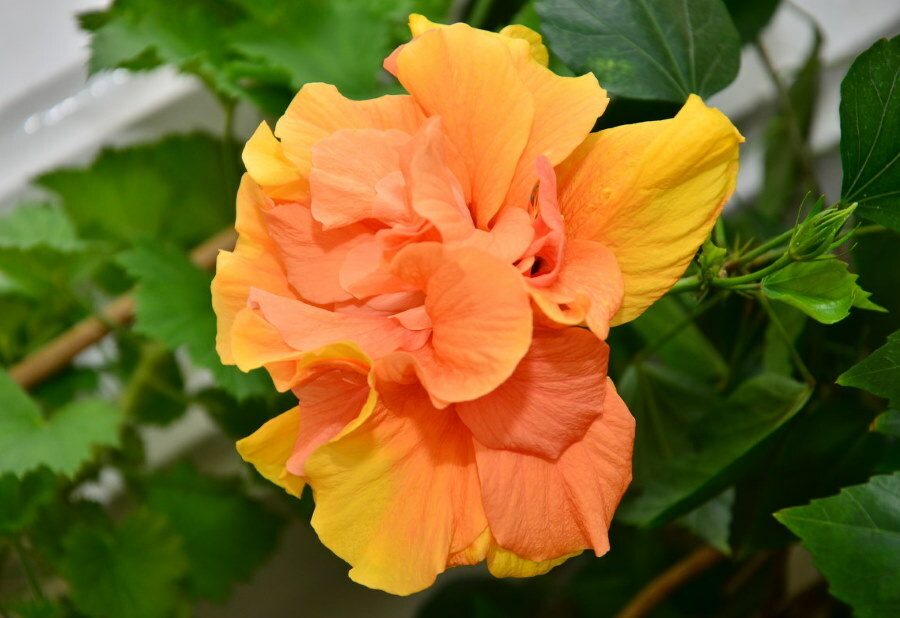
You can grow hibiscus in your garden or at home on a windowsill
Ornamental hibiscus, suitable for outdoor growing, is grown in the gardens. In landscape design, several varieties with juicy, funnel-shaped flowers are popular, especially exotic and attractive ones. In greenhouses, he specially forms collections of hibiscus with different color of buds, different period of flowering. Some herbaceous forms are similar to garden mallows, but differ in the shape of the leaves, the color of the stem. Tall shrubs form tropical thickets.
Perennial hibiscus form multi-layered or double buds of regular shape, outwardly resembling a rose. With strong thickening, unfavorable conditions, they run wild, quickly degenerate, and lose their former attractiveness.
By the nature of growth, botany distinguish three groups of hibiscus:
- Herbaceous with soft stems from 30 to 80 cm in height are grown in mid-latitudes as annuals or perennial crops of two types: dying to the base and hibernating under shelters.
- Treelike form a powerful bush up to 3 meters high with a dense crown, knotty, curved shoots.
- Varietal - hybrid, amaze with amazing colors and size of buds (maximum size 31 cm, this is a large tea saucer).
Treelike varieties grow slowly, annual growth is often frozen in winter, in spring the shoots have to be shortened.
Gardeners of temperate latitudes in the plots grow up to 10 species that are distinguished by frost resistance (they calmly tolerate return frosts), do not freeze out in winter. Some hibiscus varieties are worth mentioning in detail.
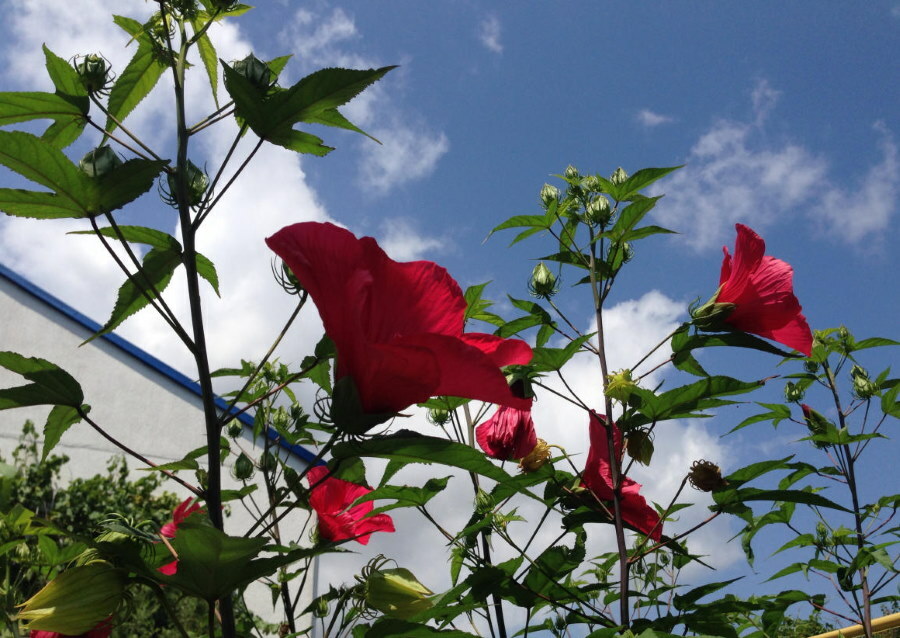
Hibiscus varieties differ in shape, color and flower diameter
Syrian hibiscus (garden) (Hibiscus syriacus)
The family unites all three groups of plants. Herbaceous annuals are propagated by seedlings, perennials are propagated by dividing a bush or by cuttings. Varietals surprise with the colors of semi-double and double buds. For landscaping, various garden hibiscus of European and domestic selection have been bred. Yellow, blue, purple colors are considered rare.
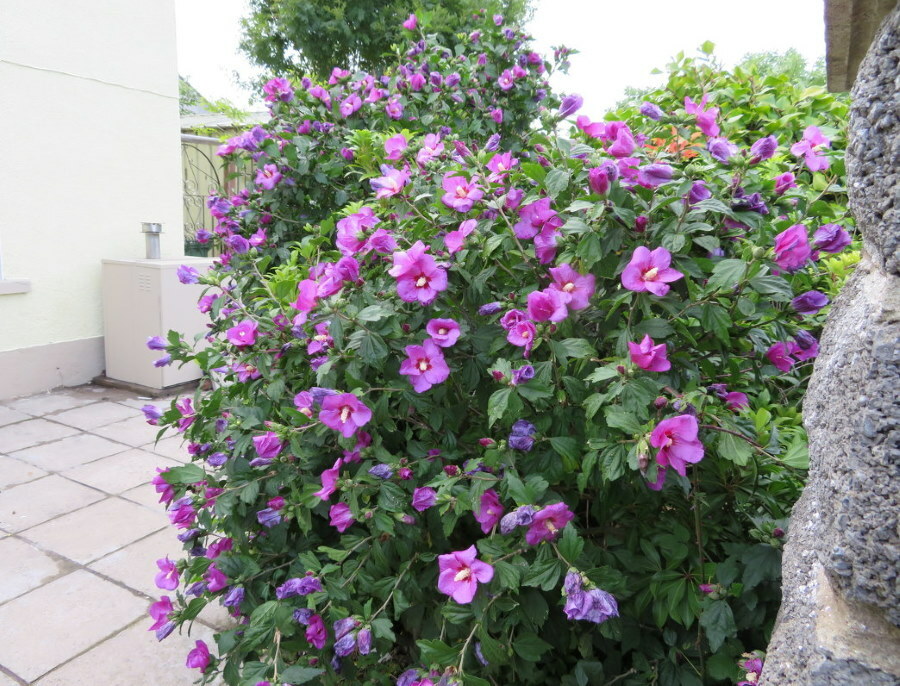
Treelike Syrian hibiscus is a deciduous plant that can be grown both outdoors and indoors
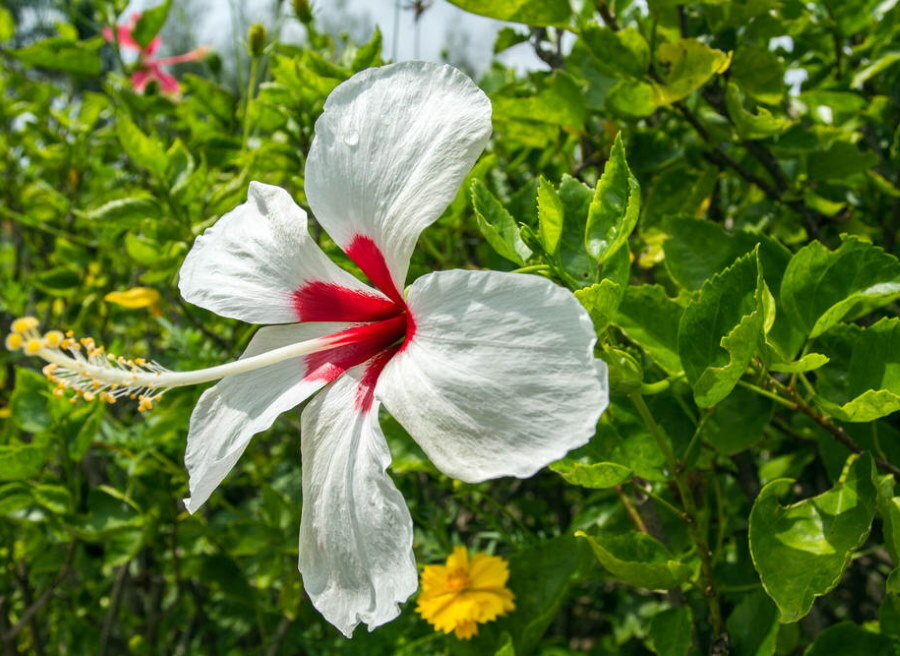
Syrian rose flowers are very similar to mallow
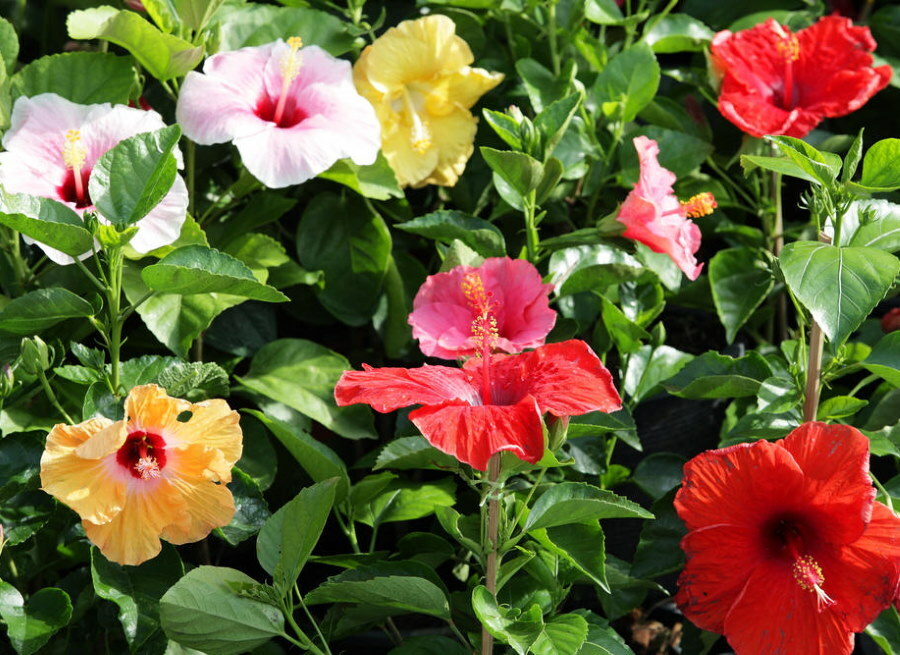
Many varieties of Syrian hibiscus have been bred with flowers of a wide variety of colors
In the photo, garden hibiscus with dark red, purple, white and crimson buds. There are varieties with a contrasting eye, edging. They are used for group and single planting in gardens. Many large-colored hybrids of various colors have been bred from the garden hibiscus flower.
Hybrid hibiscus (Hibiscus hybridus)
It is often found as a tall pot culture. The variety was bred in Russia more than 70 years ago. Fedor Rusanov managed to get a large-colored dark red hybrid on the basis of marsh hibiscus.
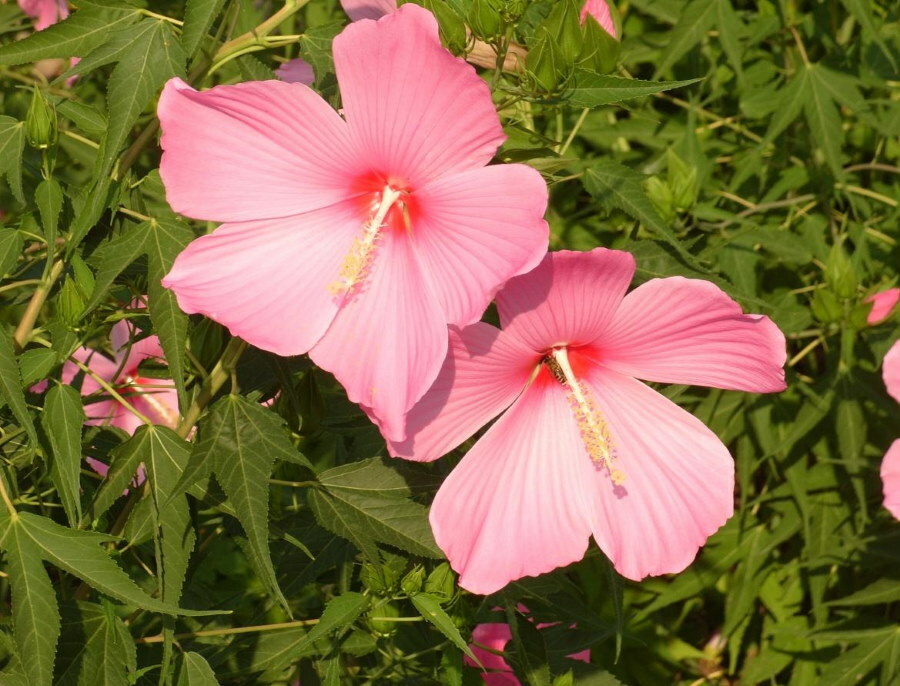
Hybrid hibiscus with pink flowers, the size of which ranges from 17-24 cm, depending on the region of growth
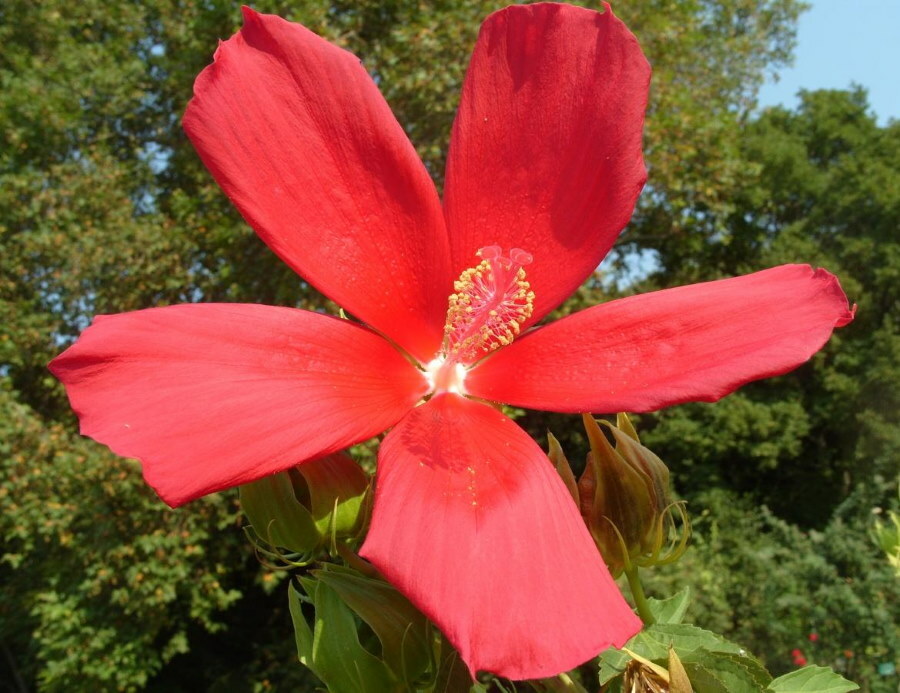
Rusanov's bright red hibiscus has good frost resistance
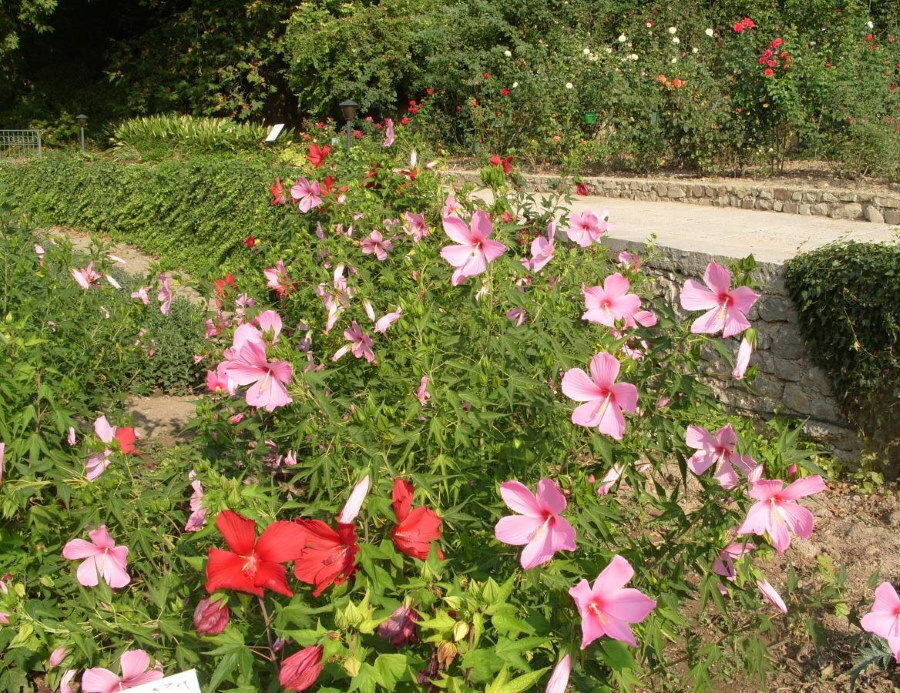
Hybrid hibiscus is especially prized for its late flowering.
The plant is unpretentious in care, grows in partial shade. For a year, with normal agricultural technology, the plant gives a good growth, blooms from August until the onset of cold weather.
Marsh hibiscus (Hibiscus moscheutos)
A species variety of a herbaceous shrub that is dying to the roots. It grows up to 2 meters per season, forms a dense crown. The flower is better known as "pink mallow".
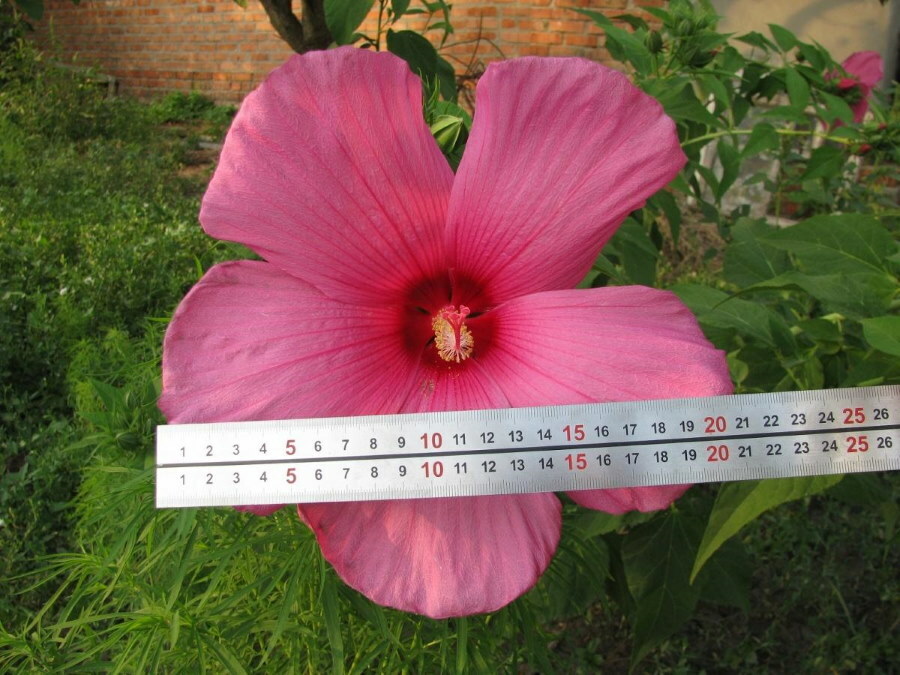
The size of a herbaceous hibiscus flower depends largely on the weather conditions in the current season. Ideal flowering conditions are hot summers with frequent rains.
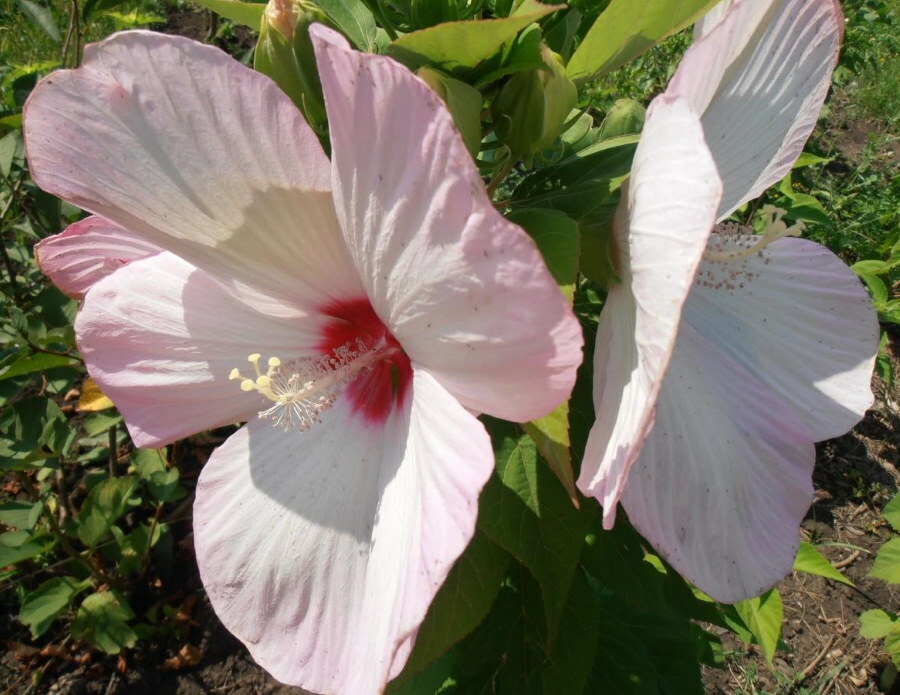
Up to 20 or more flowers can bloom on each trunk of a marsh hibiscus
The hibiscus bush in this photo with erect shoots, oval or lanceolate leaves, forms buds up to 25 cm in diameter with long stamens. The buds are often white, pink and red, less often peach, cherry and scarlet.
Chinese rose hibiscus (Hibiscus rosa-sinensis)
The most common indoor species is evergreen bush hibiscus. Buds up to 15 cm are brewed into tea. The plant blooms from spring to late autumn.
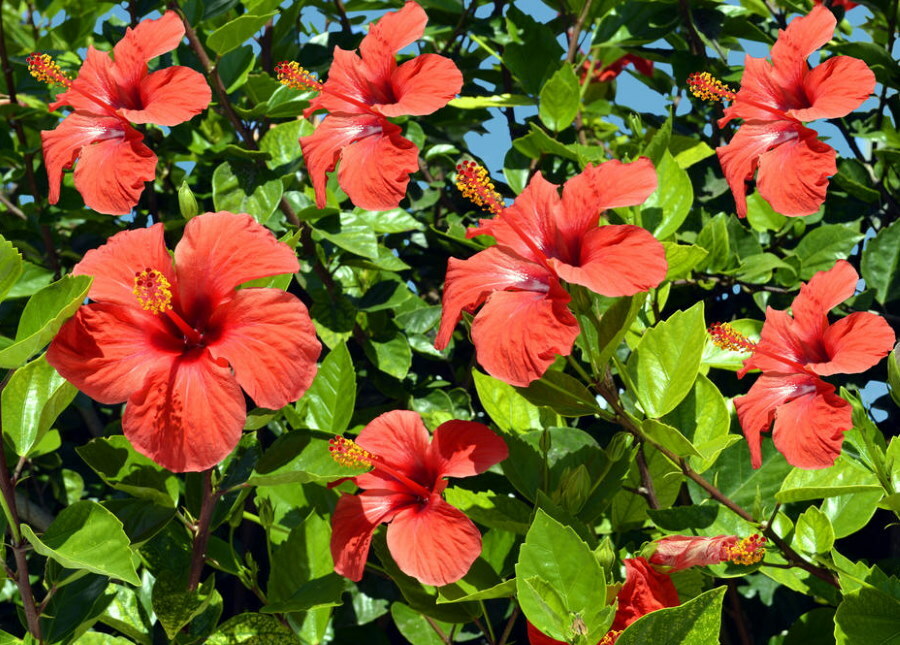
An evergreen Chinese hibiscus tree can grow up to 4 meters
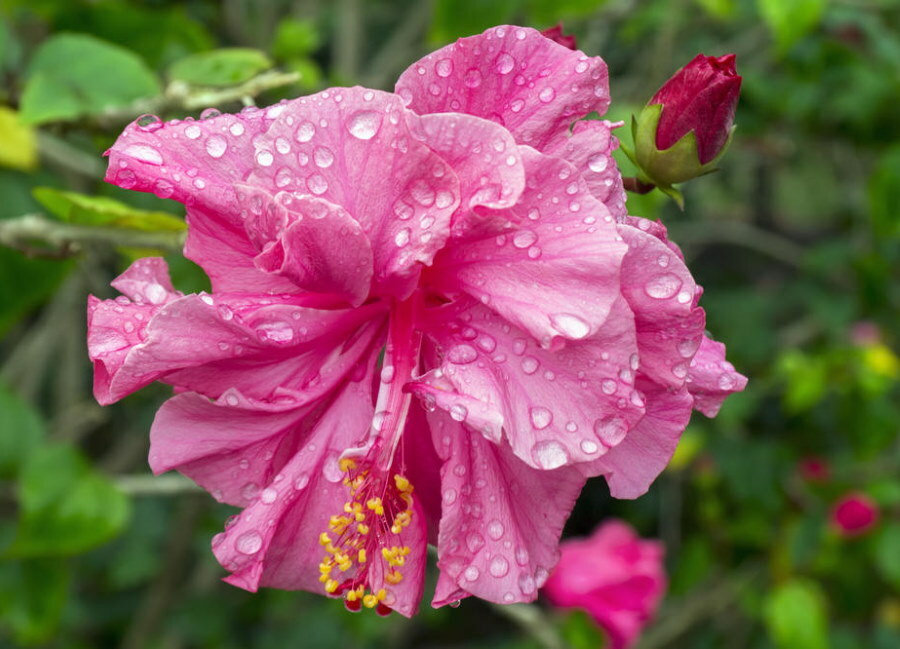
The flowers of the Chinese rose can be either simple or double
In gardens, it is cultivated as a perennial that requires shelter for the winter. The shoots are bent to the ground, covered with foil, and covered with brushwood. The flower is able to winter in the Urals, Siberia. Often grown by seedlings as an annual.

Chinese hibiscus is a very light-loving plant, with a lack of light it blooms rarely and little
Hibiscus triple (Hibiscus trionum)
Medium height, ideal for tiered border decoration, used in mixborders, rockeries. The maximum height is 70 cm, the flowers are light yellow, sunny in color. Prized for their vibrant magenta contrasting core. It blooms for only a month, but throws up to 20 buds on the shoot.
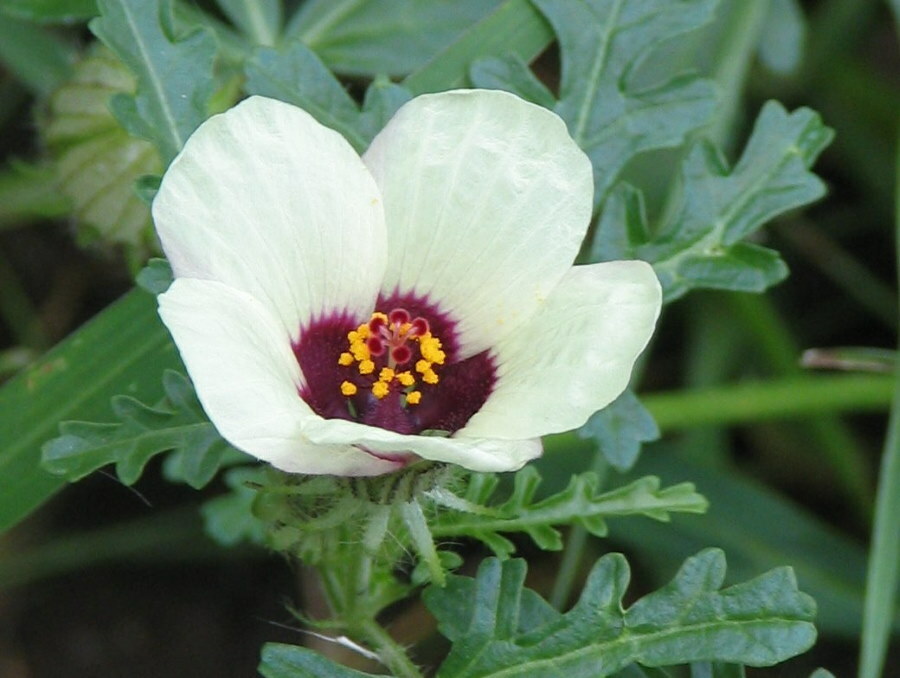
In the wild, the flower grows in Asia, Africa and America, where it is often considered a weed.
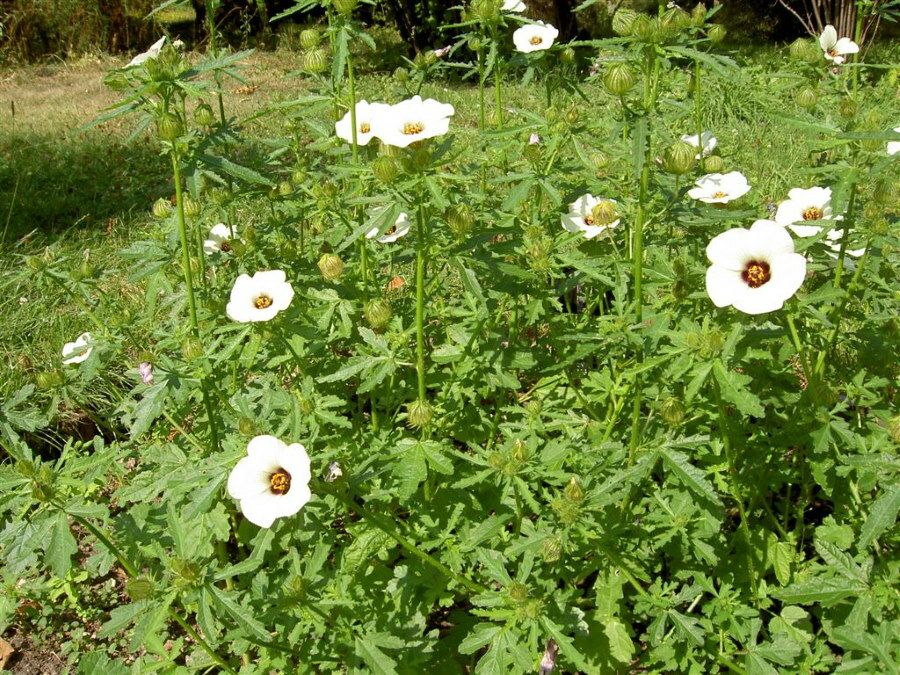
Trifoliate hibiscus is prized as a medicinal plant
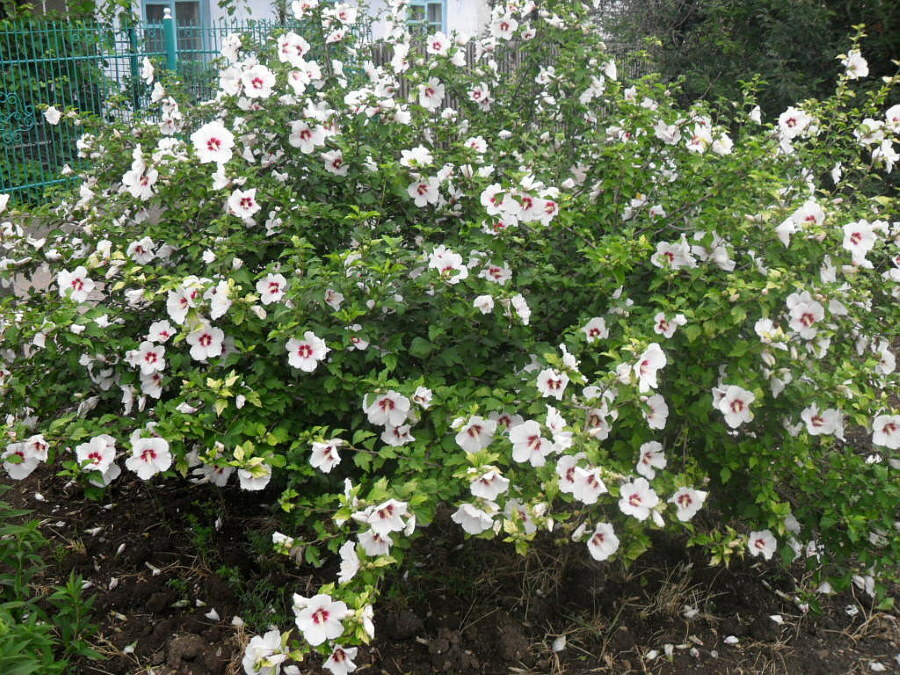
The herbaceous bush of hibiscus trifoliate can grow up to 70 cm
Rules for caring for garden hibiscus
Reproduction of a culture depends on the species. Treelike are grown from cuttings, the shoots are cut so that each piece has 2-3 points of growth. Inoculate shoots by budding, creating stems. Herbaceous species are propagated by layering, dividing the bush, and seeds.
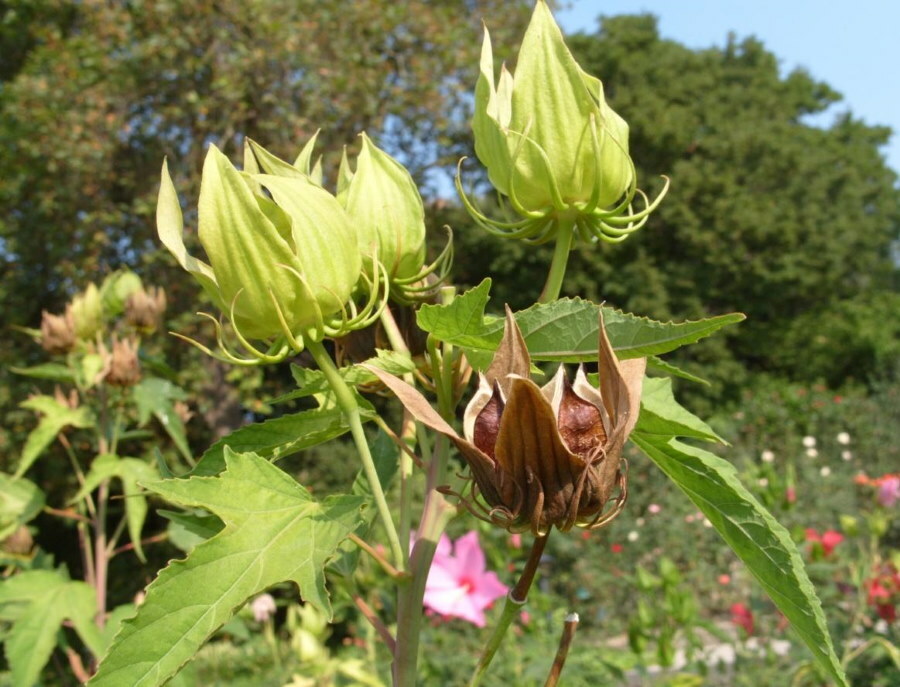
At the end of the season, seed pods ripen on the stems of hibiscus, but unfortunately, the varietal traits of the flower are not transmitted when propagated by seeds.
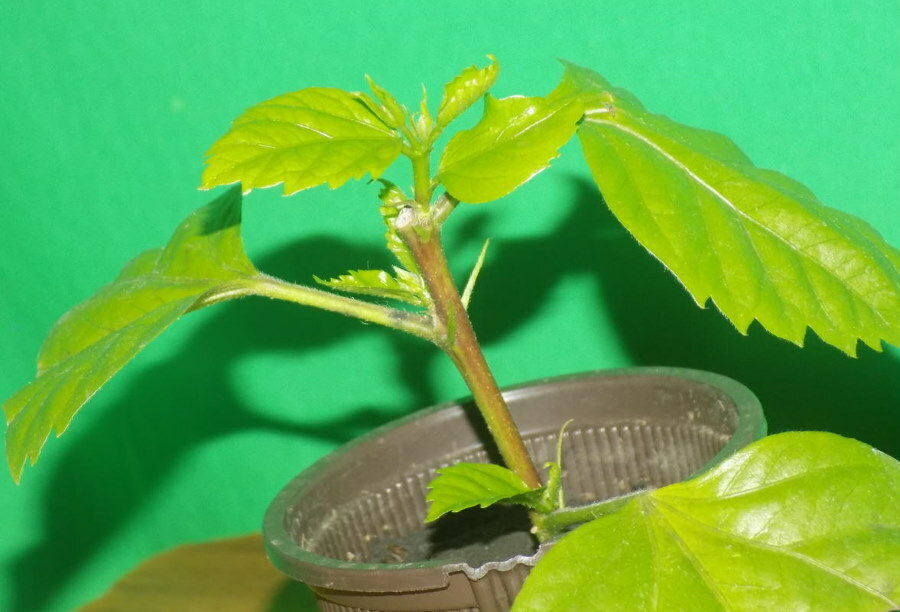
Cutting is the best way to breed hibiscus at home
Sowing for seedlings begins in the last days of April, depending on the region, planting continues until the end of May. After 5 full leaves, the plants are transferred to open ground. Frost-resistant varieties are immediately sown in open ground after the snow melts. Flowering, depending on the variety, lasts from 1 to 3 months, from June to September.
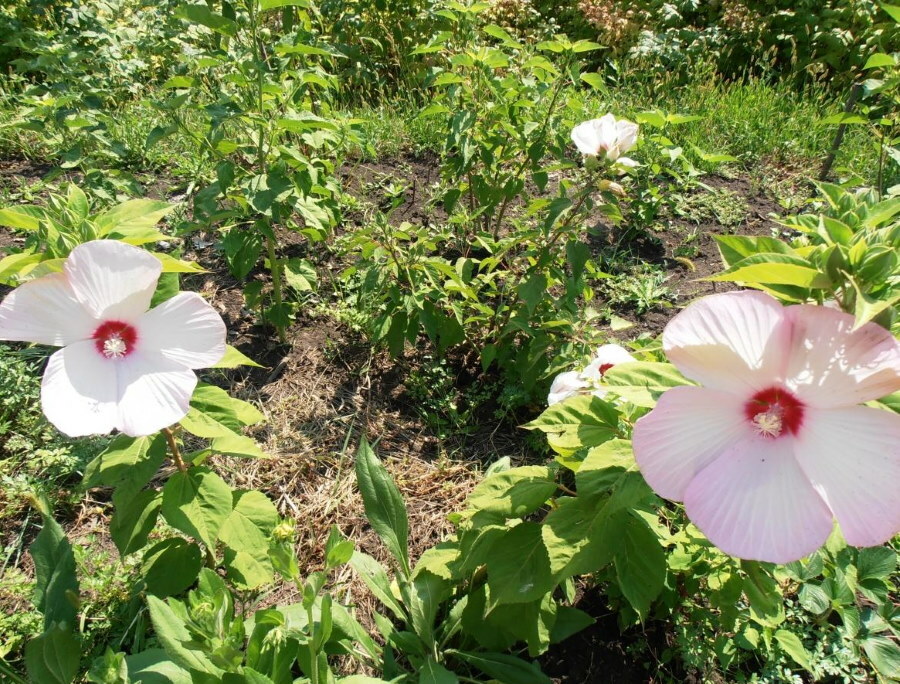
When planting hibiscus, it is important to take into account that the bushes grow rapidly, adding up to 5-10 trunks every year
Hibiscus loves nutritious soil, with a lot of humus. For planting, use a soil for roses or a universal mixture. The flower perfectly coexists with many garden crops, berry crops. Some species are resistant to partial shade, but most plants require sun.
Watering is required regular, moderate. The earth lump is moistened without drying out. In dry times, if the flower releases buds, watering is increased. Daily spraying is possible in the morning before sunrise or in the evening.
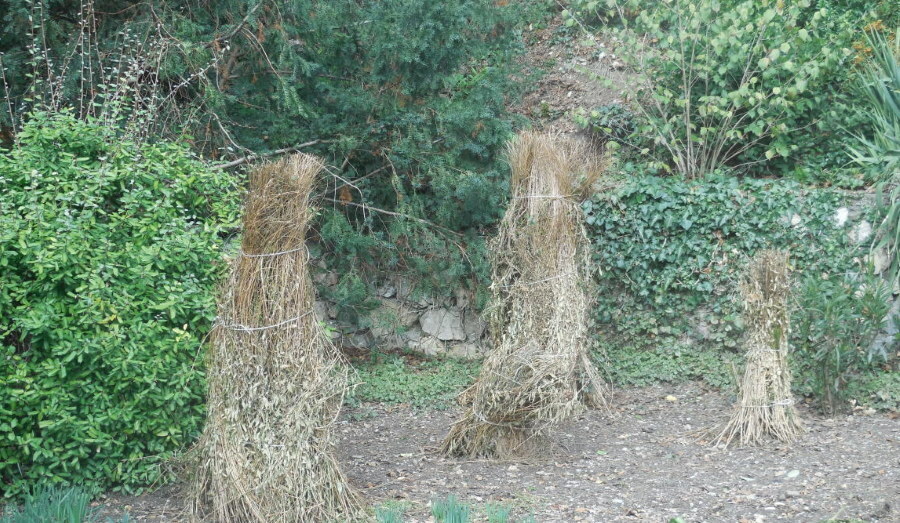
Treelike varieties of hibiscus for the winter must be covered
Pruning is done for tree varieties only. Shoots are shortened during sap flow, crooked, frozen, broken twigs are removed. An additional shaping haircut is carried out after flowering.
For abundant flowering, young shoots are pinched to stimulate the appearance of shoots.
Top dressing is applied twice a season. In the spring - nitrogen, in a month - mineral complex. In case of diseases, they are treated with fungicides.
Application in landscape design - photo examples
By combining hybrid varieties of bush hibiscus in the photo are represented by various shades of buds, they form monoplants with a bright riot of colors. The culture is grown as a tapeworm on parterre lawns, used for flowering hedges. Tree-like bushes of bizarre shape lend themselves well to pruning, young shoots are intertwined, forming braids, arches. Picturesque hibiscus eliminates the unsightly buildings.
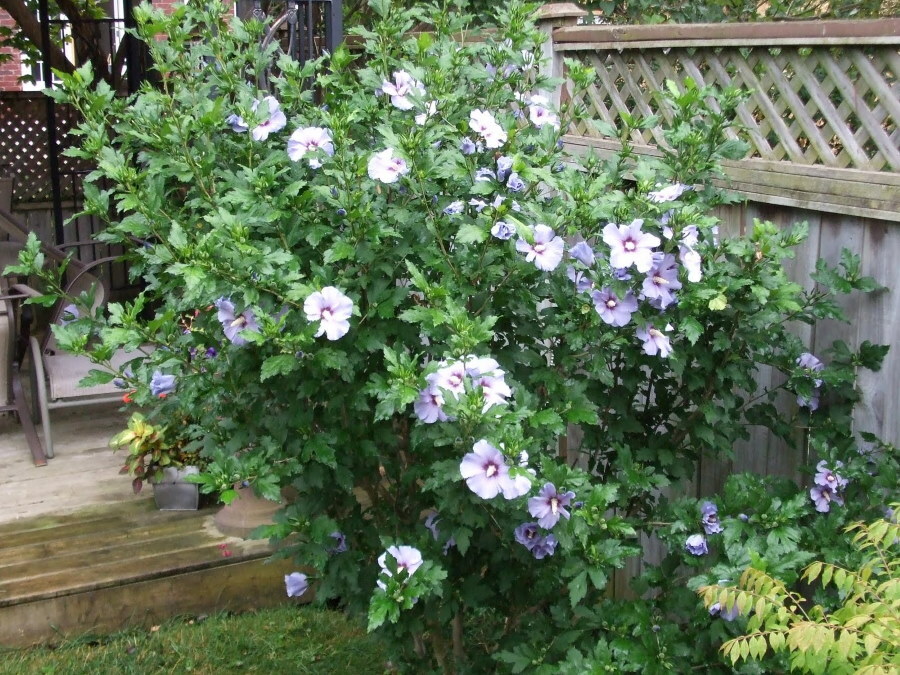
Tall hibiscus bushes can become a beautiful hedge
Low-growing herbaceous shrubs that fall in autumn are ideal for border decoration of pedestrian paths, driveways, recreation areas. Combine plants with a different shade of bud or make monochrome compositions.
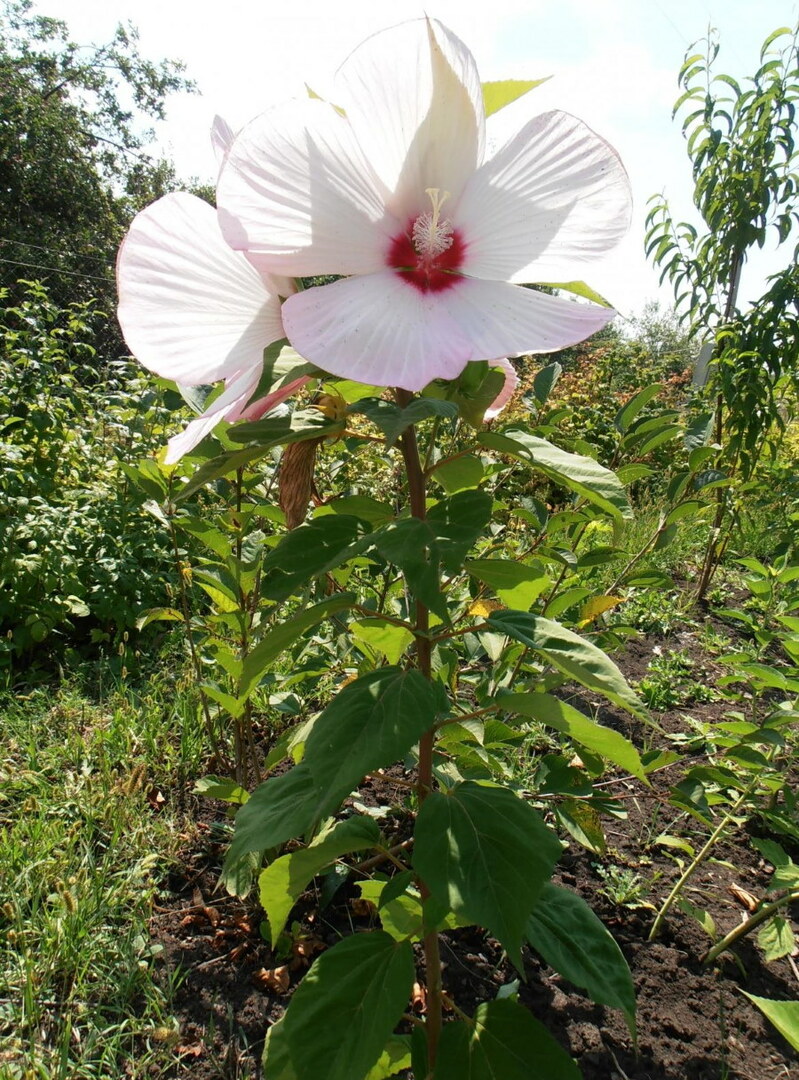
The photo shows a dwarf herbaceous variety of perennial hibiscus, the stem of which does not rise above 40 cm, but the size of the flowers can reach enormous sizes
Compact varieties go well with roses. In rockeries, they coexist with conifers of trees and shrubs, ornamental plantings with openwork or variegated foliage. A good companion will be lavender, grass grasses.
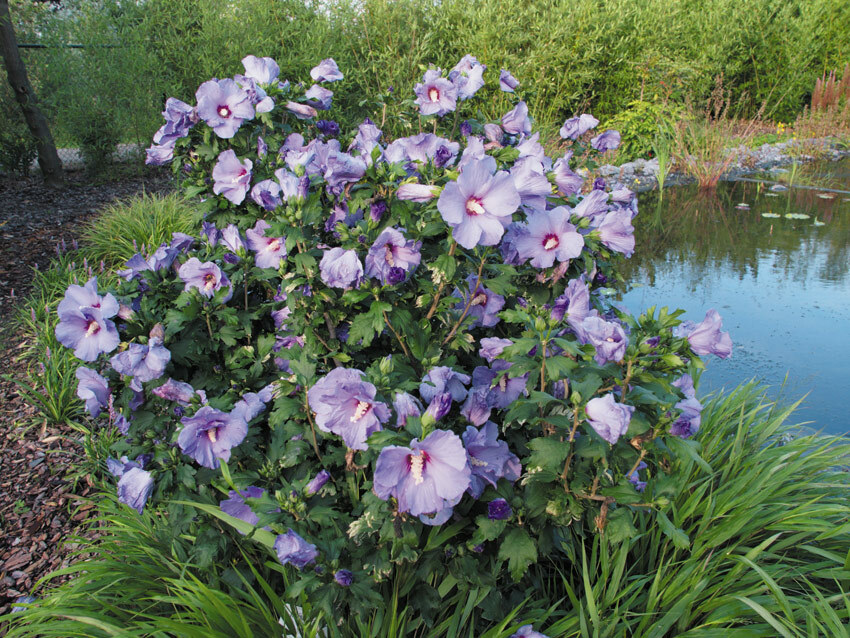
Swamp hibiscus varieties will serve as an excellent decor for a small pond
Moisture-loving varieties are planted near water bodies, decorative bridges in groups and singly. Hibiscus always looks spectacular in landscape compositions of any style.



